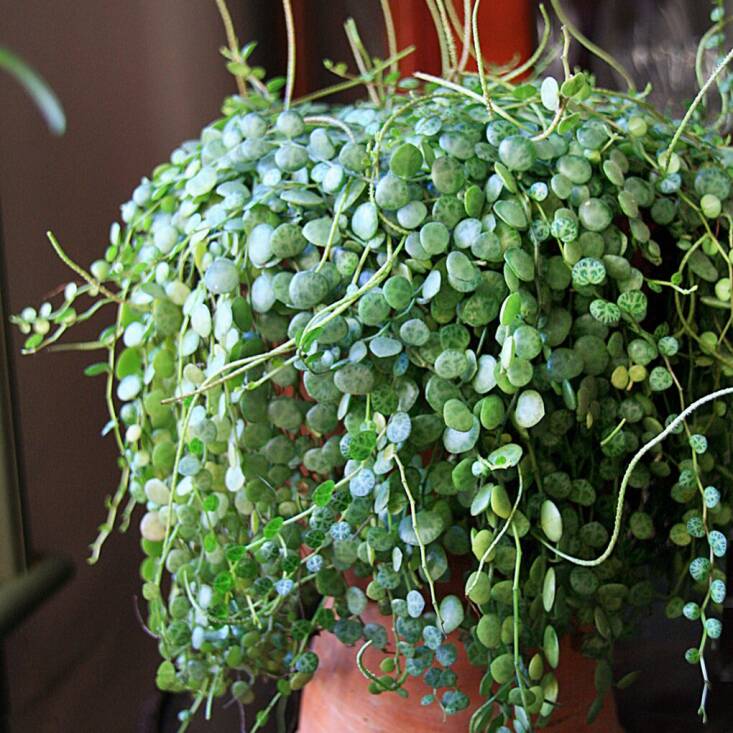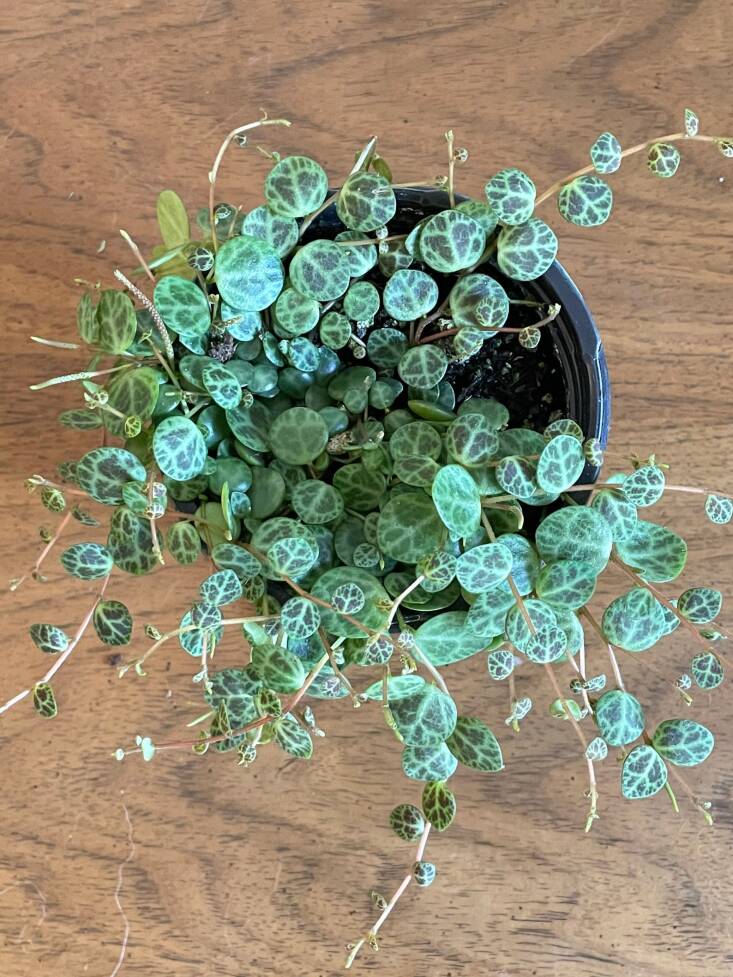String of Turtles, Peperomia prostrata
C’mon, how can you not instantly fall in love with a houseplant that’s endearingly called string of turtles. I totally did when I saw it displayed at my local nursery. What makes it even more irresistible is its price point; commonly sold in a small container, the succulent is an affordable purchase that would make a unique housewarming or holiday gift, or a great new addition to your own tropical plant collection.
Please keep reading to learn more about this charming hanging houseplant:

Hailing from warm South America, this evergreen succulent is storybook-sweet because the leaves resemble miniature turtle shells that dangle from long vines. Easy to care for, the plant can grow to 12″ long and 4″ wide and can take some neglect, which makes it a smart choice for forgetful or busy people. For those with limited space but loving the indoor apartment jungle look, this plant stays petite while still providing a lush feel.
String of turtles, like I mentioned, is a succulent, but it doesn’t totally act like one and shouldn’t totally be treated like one either. One difference is that you shouldn’t plant it in traditional succulent soil. Instead, use an indoor potting mix or seed starting mix. Furthermore, because this plant comes from Brazilian rain forests, it likes a bit more moisture during the growing season of spring and summer, and then to be drier during the winter months. Relatedly, this indoor plant also prefers a more humid environment than most succulents.
String of turtles will take about three to five years to reach maturity and then may start to decline a bit, but it is easy to propagate and will provide years of visual interest.
Cheat Sheet

- Due to its naturally trailing habit, this plant looks lovely perched on a shelf where it can cascade. Pro Tip: if you place your plant high on a shelf, remember that the top of the plant needs bright light to thrive. If your high shelf is too shady, move your plant to a lower shelf with more light.
- The stems can be delicate, so be careful when potting or moving your plant. Bonus: if some of the little turtle shell leaves fall off, you can easily propagate them by placing the leaves directly on soil. If stems accidentally break off, you can also stick the stems (lower leaves removed) in water to propagate that way.
- Children love the name and intriguing leaf shape so consider gifting this plant to a young indoor gardener.
Keep It Alive

- Like most houseplants, this cutie needs bright, indirect light. Plus, its variegation maintains better in these conditions. Avoid hot direct light that can burn the tender leaves.
- Wait a few days between watering. Ideally the top few inches should be dry before giving it another drink. However, if the leaves looks shriveled, then by all means give it a thorough watering.
- Always plant your string of turtles in a well-draining pot with sufficient drain holes.
- Due to shallow roots, this plant can go a long time without needing to be re-potted.
- Avoid placing it near cold, drafty windows. A warm spot (ideally between 65 and 75 degrees F) is much preferred.
- Prune this plant to avoid weak stems, legginess, and to promote a fuller look.
For more succulent houseplant ideas, see:
- Gardening 101: String of Pearls
- DIY: Propagating Succulents from Leaves
- 10 Things Nobody Tells You About Succulents












Have a Question or Comment About This Post?
Join the conversation (0)